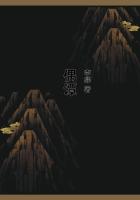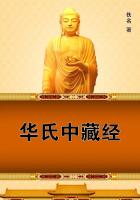This,then,was the town of Paris in the fifteenth century—an immense mass—what the Romans called insula—of burgher dwelling-houses,flanked on either side by two blocks of palaces,terminated the one by the Louvre,the other by the Tournelles,bordered on the north by a long chain of abbeys and walled gardens all blended and mingling in one harmonious whole;above these thousand buildings with their fantastic outline of tiled and slated roofs,the steeples—fretted,fluted,honeycombed—of the forty-four churches on the right bank;myriads of streets cutting through it;as boundary:on one side a circuit of lofty walls with square towers(those of the University wall were round);on the other,the Seine,intersected by bridges and carrying numberless boats.
Beyond the walls a few suburbs hugged the protection of the gates,but they were less numerous and more scattered than on the side of the University.In the rear of the Bastile about twenty squalid cottages huddled round the curious stonework of the Croix-Faubin,and the abutments of the Abbey of Saint-Antoine des Champs;then came Popincourt,buried in cornfields;then La Courtille,a blithe village of taverns;the market-town of Saint-Laurent with its church steeple appearing in the distance as if one of the pointed towers of the Porte Saint-Martin;the suburb of Saint-Denis with the vast enclosure of Saint-Ladre;outside the Porte-Montmartre,the Grange-Batelière encircled by white walls;behind that again,with its chalky slopes,Montmartre,which then had almost as many churches as wind-mills,but has only retained the wind-mills,for the world is now merely concerned for bread for the body.Finally,beyond the Louvre,among the meadows,stretched the Faubourg Saint-Honorè,already a considerable suburb,and the verdant pastures of Petite-Bretagne and the Marchè-aux-Porceaux or pig-market,in the middle of which stood the horrible furnace where they seethed the false coiners.
On the top of a hill,rising out of the solitary plain between La Courtille and Saint-Laurent,you will have remarked a sort of building,presenting the appearance,in the distance,of a ruined colonnade with its foundation laid bare.But this was neither a Pantheon nor a Temple of Jupiter;it was Montfaucon.6
Now,if the enumeration of so many edifices,brief as we have done our best to make it,has not shattered in the reader's mind the image of old Paris as fast as we have built it up,we will recapitulate in a few words.In the centre,the island of the City like an immense tortoise,stretching out its tiled bridges like scaly paws from under its gray shell of roofs.On the left,the dense,bristling,square block of the University;on the right,the high semicircle of the Town,showing many more gardens and isolated edifices than the other two.The three areas,City,University,and Town,are veined with streets innumerable.Athwart the whole runs the Seine—'the fostering Seine,'as Peter du Breul calls it—encumbered with islands,bridges,and boats.All around,a vast plain checkered with a thousand forms of cultivation and dotted with fair villages;to the left,Issy,Vanvres,Vaugirarde,Montrouge,Gentilly,with its round and its square tower,etc.;to the right,a score of others from Conflans to Ville-l'Evêque;on the horizon,a border of hills ranged in a circle,the rim of the basin,as it were.Finally,far to the east,Vincennes with its seven square towers;southward,Bicêtre and its sharp-pointed turrets;northward,Saint-Denis with its spire;and in the west,Saint-Cloud and its castle-keep.Such was the Paris which the ravens of 1482 looked down upon from the heights of Notre-Dame.
And yet this was the city of which Voltaire said that'before the time of Louis XIV it only possessed four handsome examples of architecture'—the dome of the Sorbonne,the Val-de-Grace,the modern Louvre,and I forget the fourth—the Luxembourg,perhaps.Fortunately,Voltaire was none the less the author of Candide;and none the less the man of all others in the long line of humanity who possessed in highest perfection the rire diabolique—the sardonic smile.It proves,besides,that one may be a brilliant genius,and yet know nothing of an art one has not studied.Did not Molière think to greatly honour Raphael and Michael Angelo by calling them'the Mignards 7 of their age'?
But to return to Paris and the fifteenth century.
It was in those days not only a beautiful city;it was a homogeneous city,a direct product—architectural and historical—of the Middle Ages,a chronicle in stone.It was a city composed of two architectural strata only—the Romanesque and the Gothic—for the primitive Roman layer had long since disappeared excepting in the Baths of Julian,where it still pierced through the thick overlying crust of the Middle Ages.As for the Celtic stratum,no trace of it was discoverable even when sinking wells.
Fifty years later,when the Renaissance came,and with that unity of style,so severe and yet so varied,associated its dazzling wealth of fantasy and design,its riot of Roman arches,Doric columns and Gothic vaults,its delicate and ideal sculpture,its own peculiar tastes in arabesques and capitals,its architectural pagani** contemporary with Luther,Paris was perhaps more beautiful still though less harmonious to the eye and the strictly artistic sense.But that splendid period was of short duration.The Renaissance was not impartial;it was not content only to erect,it must also pull down;to be sure,it required space.Gothic Paris was complete but for a moment.Scarcely was Saint-Jacques-de-la-Boucherie finished when the demolition of the old Louvre began.
Since then the great city has gone on losing her beauty day by day.The Gothic Paris,which was effacing the Romanesque,had been effaced in its turn.But what name shall be given to the Paris which has replaced it?














